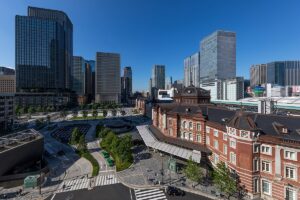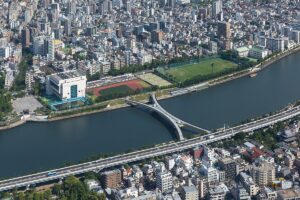Overview (history, characteristics, attractions)
The Shimanto River, which flows through the southwestern part of Kochi Prefecture, is one of Japan's cleanest rivers, and is known as "Japan's last clean river" due to the natural scenery and traditional lifestyles that remain prominent in the river basin. Stretching approximately 196 km in length, the river is characterized by its meandering shape as it flows from the mountains to the plains and out to the river mouth.
Historically, it has been an important waterway that has supported the local lifestyle and economy, with people fishing for sweetfish, transporting goods by riverboat, and farming and daily life along the river. In particular, the chinkabashi bridge, which is constructed close to the water's surface, is a unique bridge that is lowered to the river level without any railings to prevent the bridge from being washed away in the event of a flood, and is a symbol of the Shimanto River landscape.
Its attractions include the crystal clear streams, the changing nature of the seasons (fresh greenery, sweetfish season, autumn leaves, starry skies), activities (canoeing, SUP, sightseeing boats, fishing), and the quiet riverside villages and local cuisine (such as grilled sweetfish).
Highlights
- Submerged bridges: Low bridges without railings are scattered around the area, allowing you to enjoy the scenery of them becoming one with the river. This is a popular photo spot.
- Canoeing and SUP on the Shimanto River: There are a variety of activities available, from beginner-friendly courses that take advantage of the gentle current to tours that allow you to fully enjoy nature.
- River and water play spots: In the summer, the area is bustling with families splashing around in the water and having barbecues (please check as play areas vary by location).
- Ayu fishing and local cuisine: Enjoy local delicacies such as grilled salted ayu and ayu rice (please check the fishing season and availability).
- Scenery from the river mouth to downstream: Ideal for observing nature, such as the scenery of the tidal flats and river mouth, and migratory birds.
Access (nearest station, transportation, etc.)
- Main entrance: The nearest station to the center of Shimanto City is Nakamura Station (JR). To get to each sightseeing spot, use Nakamura Station or the surrounding area's buses or rental cars.
- By car: From Kochi City (Kochi Ryoma Airport), it takes about 1.5 to 2 hours via national highways and expressways. Renting a car is convenient and is a good way to travel along the river and visit the submerged bridges.
- Public transportation: Regional buses and local trains operate, but there are few services between tourist spots, so please check the timetable in advance.
- By plane: The most common route is to fly from Tokyo, Osaka, etc. to Kochi Ryoma Airport, and then rent a car or take a bus to Shimanto.
Estimated stay (estimated time required)
- Short-term sightseeing: If you only want to photograph the sunken bridges and observation spots, it will take about 1 to 3 hours (travel time not included).
- Activities: Canoeing and SUP experiences are available for half a day to a full day (including transportation and training).
- Relaxed sightseeing: If you want to stroll around the riverside villages, visit the various sunken bridges, and enjoy local cuisine, we recommend staying one to two nights.
Nearby spots
- Submerged bridge locations: There are several submerged bridges scattered around the Shimanto River basin. You can visit several of them by driving along the river.
- Roadside stations and local direct sales outlets: You can purchase local products and snacks, and it's also a convenient place to get tourist information.
- Nearby natural parks and beaches: There are plenty of natural walking spots and beaches around Shimanto City, so if you have time, you can explore them.
- Local history and cultural facilities: Learn about the nature and life around the Shimanto River at local museums and exhibition facilities.
Things to be aware of (crowds, manners, seasonal precautions, etc.)
- Crowds: On summer weekends and during the Obon period, the riverside and the area around the popular sunken bridges become crowded. Parking and toilets are limited in some areas, so it's best to arrive early.
- Manners: To protect the environment, please be sure to take your trash with you, refrain from making bonfires near rivers, fishing or gathering without permission, and do not trespass on private property. Please follow local rules.
- Safety: Submerged bridges and riverbanks can be slippery when wet, and the current can be rapid when the water level rises. Never approach riverbanks or bridges during rain or when a typhoon is approaching. We recommend wearing a life jacket (when canoeing, etc.).
- Seasonal precautions: Take precautions against UV rays and heatstroke in summer, and against the cold mornings and evenings in spring and autumn. During the rainy season and typhoon season, flooding and road closures are likely to occur, so please check the latest weather and road information.
- Transportation: Public transportation is infrequent in many places, so it is more efficient to consider renting a car or taking a tour.
The Shimanto River is a fascinating place, filled with natural beauty and local culture. When visiting, please be mindful of safety and good manners, and enjoy the river with the awareness of preserving the tranquil environment for future generations.



